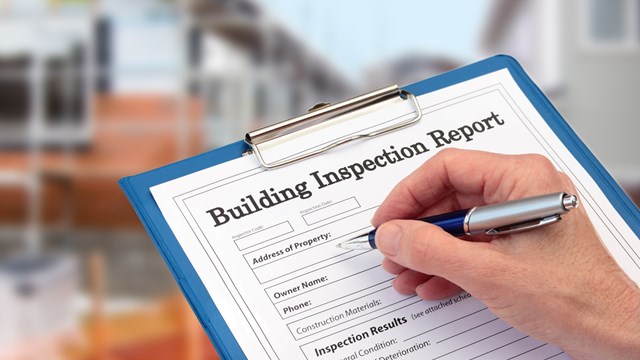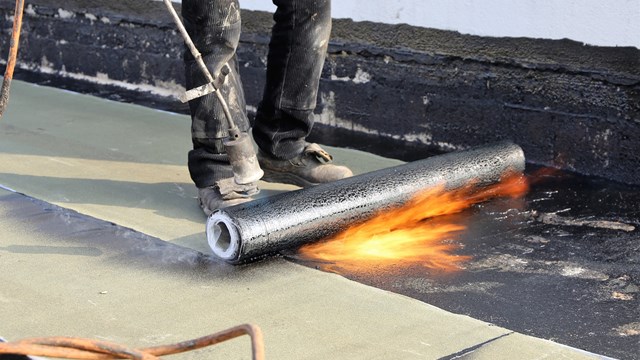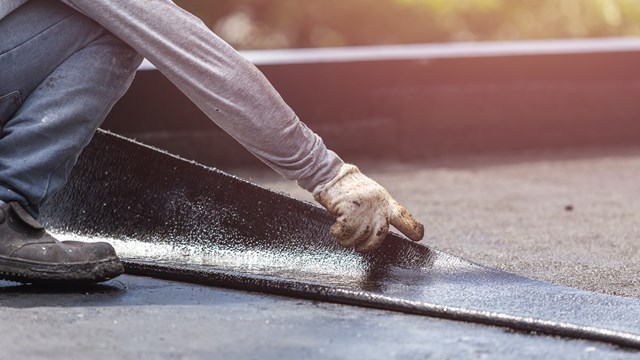The inspections and repairs required by the city’s Local Law 11 are often viewed by buildings as a costly hassle, but they can also been seen as an opportunity to make necessary improvements to your building’s façade, and to keep the area surrounding your building safe.
As you might suspect, Local Law 11 was preceded by Local Law 10, which was enacted in 1980 and required examinations of the front facades of buildings 80 feet and taller. It was replaced by Local Law 11 in 1998, which required all exposed facades—front, sides and back—of buildings greater than six stories in height to be inspected for any structural deterioration or conditions that could lead to hazards such as falling debris.
According to Howard Zimmerman, president of Howard L. Zimmerman Architects PC in Manhattan, buildings have a two-year window in which to comply with an order to repair or properly maintain a cited façade. Buildings cited in the most recent round of Local Law 11 inspections, which began on February 21st of 2005, have until February of 2007 to complete their required repairs.
According to Wayne Bellet of Bellet Construction in Manhattan, there are three basic categories in which buildings may be identified under Local Law 11. A building could be labeled as Safe, as Unsafe, which means a problem exists that has to be handled immediately, or “Safe with a Repair and Maintenance Program,” or more concisely, SWARMP. A SWARMP classification can either mean that a building is fine, or major or minor repairs need to be made. If so, the building has five years (until the next Local Law 11 cycle) to get repairs done.
We are now in Cycle 6 of Local Law 11, and will be until February 21, 2007. Buildings with conditions previously classified as SWARMP in Cycle 5 must be repaired prior to filing for Cycle 6 or face serious fines and penalties.
“It gives the owners some breathing room that they now have a five-year span in which they have to correct the SWARMP conditions,” Bellet says. If the building does not comply by its next Local Law 11 inspection, the result is not an immediate fine, but an “Unsafe” report for the next cycle, which forces the building to get the repair done.
Scheduling an Inspection
The first step in getting your building’s Local Law 11 inspection done is pretty basic—you have to make an appointment. This may sound obvious, but if your building needs substantial work done in order to meet Local Law 11 requirements, you may have a tough time meeting the February 2007 deadline.
“People are starting to get too late if a major project has to be done,” says Eugene Ferrara, CSI, of JMA Consultants in North Bergen, adding that a project costing more than $750,000 probably wouldn’t get done in time to meet the deadline.
“Most of my clients who have major projects on the horizon have already gone onto the bidding phase with specifications and so forth, and we’re already planning their projects.”
It is possible to file for a 90-day extension with the Department of Buildings (DOB) if you can show that progress is being made and that proper safety precautions are in place in the meantime.
Ferrara—who along with Joe Canton, a professional engineer with JMA Consultants, sits on the DOB’s Local Law 11 committee—says that he and Canton have suggested a system where odd-numbered addresses would be worked on during part of a Local Law 11 cycle, and even-numbered addresses worked on during another part of the cycle. Ferrara says this would give architects and contractors half the buildings to work on during these time periods, and would ultimately reduce the cost to buildings.
The Inspection
Once an appointment is scheduled, Ferrara says he and Canton will talk with building management about their last report and how it was filed. If it had previously been filed as a SWARMP building and the necessary work wasn’t done, Ferrara will determine what repairs need to be made to pass muster. If the building was deemed safe, a standard Local Law inspection will be performed, and if something is wrong, it will be pointed out.
“We do the entire building inspection by visual means first,” Ferrara says. “And then, if there is nothing wrong except for maybe a little thing in the front elevation or street elevation that we want to attack, that’s where we place our scaffold inspection.” Doing this fulfills the part of the law that requires a scaffold drop on at least one street elevation as well. After the inspection is done, the firm doing the inspection files a report with the DOB.
According to Zimmerman, “Usually we get a call from a co-op board or manager, and we’ll go look at the building and give them a verbal walk-through—a visual inspection to get a feel for the general state and condition of the building. We’ll [tell them] if it looks good, looks bad, or it looks mostly good but we see a problem here, or something has to be repaired. Hopefully they’ll then hire us to do the inspection and to prepare written specifications to quantify the repair work so that it then be bid out to contractors on the open marketplace.”
By “quantifying” the repair work, Zimmerman says “We prepare a set of contract documents that explains to the contractor where and to what extent the problem is, and how we want them to fix it.”
According to Zimmerman, sometimes the inspection can be more involved than just looking up at the building’s exterior. Sometimes a scaffold must be erected to allow inspectors to get a closer look at the building—and buildings incorporating more than one kind of material on their façade present other considerations as well.
“What we can see from the ground is sometimes limited,” says Zimmerman. “To a certain degree [the ground inspection] depends on the day, how clear it is out, how the sun is shining. On a cloudy day you can’t see as much as you can on a sunny day, but on a sunny day, the sun may be in your eyes, so getting on a scaffold lets you get up close and personal to see what the extent of the problem is.”
“If you have different materials on each façade, in my opinion you would need to inspect all four sides, because all four sides are different materials that act and behave differently,” Zimmerman continues. “If you have a decorative façade on your building’s street side—let’s say it’s terra cotta—and the other three sides are brick, your inspector would obviously inspect the street-side façade. Then it would up to his judgment whether or not a second scaffold drop is required to see one of the brick facades.”
The Repairs
After the inspection is done, bidding with contractors to make the repairs will begin. “The report or survey should be a good tool to bring you to the next step, which then makes it much easier to go out to bid and get the project done,” Ferrara says. He added that in addition to photos, his firm provides detailed drawings of the problem so that building managers know exactly what needs to be done.
“We bid out the job, analyze the bids for the client, and supervise the contract administration phase of the work,” adds Zimmerman. “We watch over the contractor to make sure that he is performing the repair exactly to the specifications we spelled out in our report. Basically we’re making sure [the contractor] follows our specifications to repair the problem in the manner we have prescribed.”
According to Bellet, the types of repairs that are normally done after an inspection include repairs to lintels, balconies, repointing of bricks and repairs to any cracks in the building’s masonry.
Ferrara says most buildings will have something wrong with them, even if it’s minor. “Out of the almost 500 or 600 buildings we deal with on a yearly basis, we probably find something on just about every one, except for the ones we just did a major project on within the last two or three years.”
Local Law 11 is designed to keep a building’s area safer (Local Law 10 was enacted after several incidents in which people were injured by debris falling off buildings) but Bellet says your building will benefit in other ways from getting these repairs done.
“It stops water, air, snow and moisture from getting into buildings,” Bellet says. “And that can turn into mold and mildew, and you know what happens with that. If you have gaps in the envelope of your building, it makes good common sense to repair it as quickly as possible.”
Other Considerations
Like all professions, there are good engineers, architects and contractors, and bad ones. Certainly, there are inspectors out there who may turn a blind eye to a problem with your structure while filing a Local Law 11 report, and while that may seem like a tempting way to save some money, it’s not a good idea.
“You get different levels of review from different consultants,” Ferrara says. “We’re not trying to be overanxious in doing the report, but if a guy thinks he’s doing someone a favor by not reporting [problems], or not insisting that certain work that’s crucial to the building and the public safety be done, he’s going to make things worse down the road, and put the public at risk. The engineering consultant has to be a strong advocate for the building and its owner. Even if the owner doesn’t perceive it that way, you’re looking out for their investment.”
Something that Bellet recommends is to do a little homework on your contractor, especially when it comes to doing a scaffold drop.
“I can count on my hands how many times people have asked for a copy of my rigger’s license—or even for my number. I’m hanging hundreds of thousands of dollars [worth of equipment] off the side of their building on a public street, and all they ask for is my insurance.”
The problem with that is that anyone can have insurance, but only a licensed rigger is insured for setting up scaffolds.
“A contractor could have insurance to paint interiors,” Bellet says. “And what if you hire him to hang a scaffold, and he does it, and there’s an accident? The adjuster will come out and say, ‘He’s an interior painter,’ and deny your claim.”
In addition to asking for a number or a copy of a rigger’s license, Bellet suggests calling 311, and asking for the Cranes and Derricks Department, and ensuring that they have a record of the number and that it matches with the company you’re working with.
Costly, but Worth It
There’s no doubt Local Law inspections are expensive. As Bellet says, even if your building is in tip-top shape, you have to hire an architect and pay for a scaffold drop. Then if the architect or engineer finds something, the building has to pay for a rigger, and for a pedestrian sidewalk shed protection setup.
“From a cost point of view, it impacted New York City in a tremendous manner, but at the same time, I have to assume it’s saving lives,” Bellet says.
Ferrara says that once buildings are caught up with Local Law 11 and maintain a regular schedule, the cost stays under control. He also says that ultimately, the law is beneficial to buildings.
“Local Law 11 shouldn’t be looked at as a hindrance to building owners,” Ferrara says. “It should be utilized the way a physical with a doctor is for a person. It’s done to catch major issues before they become catastrophic and financially destructive. And this can only be done with qualified people looking at the buildings.”
“I’m always amazed at how people don’t see how dangerous things can be,” says Bellet. “A piece of caulking coming down 20 stories is going to cause some damage. Your family and friends live in these buildings—of all the buildings in the city you care about, it should be your own.”
Anthony Stoeckert is a freelance writer and a frequent contributor to The Cooperator.







Leave a Comment